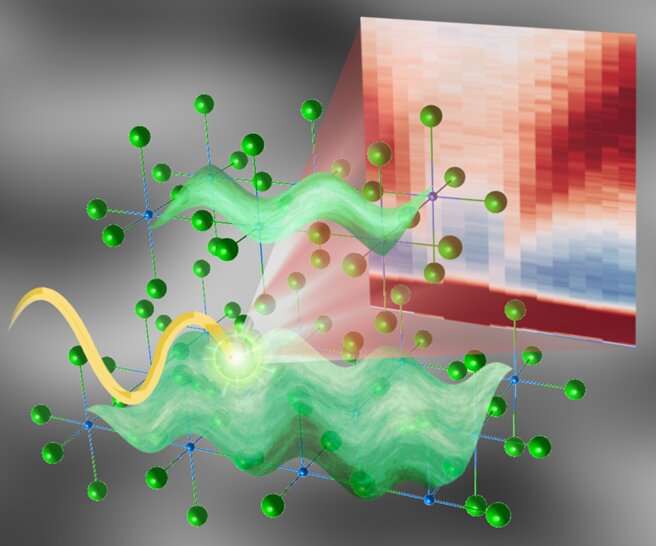Fig.1 Resonant inelastic x-ray scattering reveals acoustic plasmons associated with oxygen atoms in hole-doped layered cuprate superconductors. Credit: Diamond Light Source
The presence of acoustic plasmons in p-type (hole-doped) cuprate superconductors has now been confirmed by Dr. Ke-Jin Zhou and his team using high-resolution RIXS (Resonant Inelastic X-ray Scattering), at Diamond Light Source's I21 beamline. This discovery described in their recently published paper in Physical Review Letters opens up new opportunities to study and understand these collective charge excitations and their role in superconductivity. This may make it possible to design very-high-temperature superconductors, which lend themselves to practical applications such as highly-efficient energy transmission.
Cuprate superconductors are a family of ceramic compounds in which insulating blocks are sandwiched between layers of copper and oxygen atoms. When doped with suitable atoms, these materials become superconductors, that is, electrical resistivity falls to zero below critical temperatures. Scientists are constantly striving to design superconductors that could work at room temperature. However, this requires a more complete understanding of how doped charges behave collectively.
Principal Beamline Scientist at Diamond, and Principal Investigator, Dr. Ke-Jin Zhou explains that in 2018, researchers at Stanford University using RIXS at the European Synchrotron Radiation Facility (ESRF), finally made a breakthrough and detected acoustic plasmons, a type of collective charge excitations, in an n-type (electron-doped) cuprate superconductor1. Because of its charge sensitivity, RIXS is the perfect tool for studying collective charge behavior. It offers a much more complete picture than (for example) inelastic neutron scattering, optical Raman scattering or electron energy-loss spectroscopy. The Stanford researchers investigated the electron-doped cuprate LCCO (lanthanum cerium copper oxide), using Cu L3-RIXS, which focuses on the copper atoms.
Using RIXS at Diamond, in 2020, the team confirmed the presence of acoustic plasmons in p-type hole-doped cuprate superconductors and that they are primarily associated with the oxygen atoms. "These are remarkable results. It seems that the collective charge excitations have strong preference in space, despite the fact that the charges associated with Cu and O atoms are strongly hybridized with each other. Understanding this may help us to clarify the ground state of the cuprate superconductors," lead author Dr. Abhishek Nag says.
There aren't many n-type cuprates, and they have relatively low critical temperatures. This means they offer limited opportunities for researchers wanting to explore how this collective behavior changes with temperature. There is a greater number of p-type (hole-doped) cuprates, and they generally have higher transition temperatures. Finding acoustic plasmons in p-type cuprates clarifies their universal presence, irrespective of the sign of the doped charges in cuprate superconductors, and also open up new avenues for research.
Fig. 2. I21 RIXS beamline at Diamond Light Source, UK, whose new ability of continuous spectrometer rotation has led to this discovery. Credit: Diamond Light Source
The study is not limited to cuprates. RIXS could also shed light on plasmon behavior in other layered superconductors, including iron-pnictides and the newly-found nickelate superconductors.
"The aim of this research is to improve our fundamental understanding of the mechanism through which superconductivity occurs. Since we now know that acoustic plasmons are present in both n- and p-type cuprates superconductors, and the specific routes to study them in each type, we can focus on finding out whether they play any role in superconductivity. This may, in turn, make it possible to design very-high-temperature superconductors, which lend themselves to practical applications such as highly-efficient energy transmission," adds Dr. Ke-Jin Zhou.
The team say that the reported work just marks the beginning of the plasmon research in superconductors. They plan to continue to use RIXS to explore acoustic plasmons in cuprate superconductors, investigating different materials, and different levels of doping, at a range of temperatures above and below the critical temperature.
The study details how they demonstrated the existence of strongly dispersive low-frequency acoustic plasmons in an extensive O K-RIXS study of two representative p-type cuprate materials: La1.84Sr0.16CuO4 (LSCO) and Bi2Sr1.6La0.4CuO6+δ (Bi2201). Their results show that the nature of acoustic plasmons is similar across cuprates with different types of doped charges.
The paper called "The nature of plasmon excitations in hole-doped cuprate superconductors" is published in Physical Review Letters.
More information: 1. Hepting M et al. Three-dimensional collective charge excitations in electron-doped copper oxide superconductors. Nature 563, 374–378 (2018). DOI: 10.1038/s41586-018-0648-3
Abhishek Nag et al. Detection of Acoustic Plasmons in Hole-Doped Lanthanum and Bismuth Cuprate Superconductors Using Resonant Inelastic X-Ray Scattering, Physical Review Letters (2020). DOI: 10.1103/PhysRevLett.125.257002
Journal information: Physical Review Letters , Nature
Provided by Diamond Light Source

























